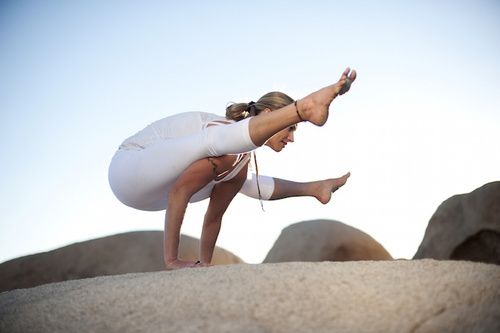Ashtanga yoga: origins, practice, benefits
Ashtanga yoga , or “eight steps” in Patanjali’s texts, focuses on breathing and naturally flowing movements .
Let’s find out better.
> Meaning of Ashtanga Yoga
> Origins and philosophy of ashtanga yoga
> The practice
> The benefits of ashtanga yoga
> The teachers and the schools
> Curiosities of Ashtanga Yoga

Meaning of Ashtanga yoga
Among the various techniques of yoga is called Ashtanga yoga (or also Astanga) the style that includes a series of sequences in which the movements flow naturally. The word “Ashtanga” literally means “eight steps” indicated in Patanjali’s Yoga Sutra . Patanjali’s Yoga Sutras constitute the basic philosophical writings of yoga.
There has been and still exists a long tradition of direct teacher-to-student teaching (complete with Sutra chanting ) and Ashtanga is based on this form of transmission.
Origins and philosophy of ashtanga yoga
According to the Indians, the “Yoga Sutra” was written between 400 BC and 200 AD. Hindu mythology, on the other hand, dates it much earlier, around 10,000 BC. The “Yoga Sutra” is the most important text of classical yoga. The author, Patanjali, collected and arranged in this work the existing techniques and knowledge of his time. The Yoga Sutra defines yoga as “stilling the mind” ( yogas chitta-vritti-nirodha ).
Ashtanga was conveyed and structured by the great teachers T. Krishnamacharya and Sri K. Pattabhi Jois from the ancient text entitled Yoga Korunta , which describes a unique system of Hatha yoga developed by Vamana Rishi.
Practice
Calm and relaxation are indispensable in the dynamic cycles of movements and also in the static nature of the positions held. Pranayama breathing is maintained throughout the performance. It is the breath that makes the movement take place, making it possible and aware. The teaching is direct, the practice fits perfectly on the practitioner.
In the progression of Ashtanga, the first series is called Yoga Chikitsa, described in Yoga Mala . Yoga Chikitsa , means yoga therapy, realigns the spine, eliminates toxins, builds stability and strength. It is about 75 positions (the whole sequence lasts about 2 hours); it starts with the sun salutation in the two variants and then moves on to standing positions, sitting positions, inverted, on the back.
The second phase of the practice is called Nadi Shodana , which cleanses the nervous system . We then continue with the sequence called Sthira Bhaga.
You can also learn more about the benefits of Raja Yoga
The benefits of Ashtanga yoga
In ashtanga we work in full respect of the looseness of the back, the elasticity of the muscles and tendons, the control and the ability to listen to the body in general. The internal organs of the body also benefit , the practice affects the regulation of the endocrine glands and the nervous system, thus helping to create the conditions for total psycho-physical health.
It takes a lot of listening. Everything is conducted by the breath . To achieve this calm state of execution, Patanjali describes eight steps:
- Yama (action towards others)
- Niyama (action towards oneself)
- Asana (posture)
- Pranayama (breath control)
- Pratyahara (fasting of the senses)
- Dharana (concentration)
- Dhyana (meditation)
- Samadhi (self-awareness)
The teachers and the schools
Sri Tirumalai Krishnamacharya (1888-1989), after the death of his father, devoted himself to the study of Sanskrit with the help of his grandfather H.H. Sri Srinivasa Brahmatantra Parakala Swami, who was the head of Bramhatantra Parakala Mutt, a Hindu monastic university. Krishnamacharya decided to go in search of the legendary yogi Yogeshwara Rama Mohan Brahmachari.
After two and a half months on foot, she found him in a cave at the foot of Mount Kailash. He spent seven and a half years there and deeply learned the practice of yoga from Brahmachari. Alongside the more practical aspects which consisted of asanas, pranayama and vinyasa, he also memorized several books on yoga. In addition to Patanjali’s Yoga Sutras , during this period he particularly studied the texts of Vamana Rishi’s Yoga- Kuruntha / Korunta .
When Krishnamacharya left Mysore, he entrusted the transmission of traditional yoga to his eldest student, Sri K. Pattabhi Jois .
Later Pattabhi Jois began to write a book on the system of practice. Yoga Mala was written between 1958 and 1960. “Mala” means garland and refers to Ashtanga Yoga as the pearls of breath and movement, lined up along the garland. The first Westerner, the Belgian André van Lysbeth in 1964, meets Pattabhi Jois and begins to learn yoga from him.
Sri K. Pattabhi Jois taught until May 18, 2009, the day of his death, emphasizing what he had learned from his guru Sri T. Krishnamacharya, whom he met in 1927 and with whom he continued to study Ashtanga Yoga for more than 25 years.
Curiosities about Ashtanga yoga
It is yoga that fits on the person, not the other way around, according to Krishnamacharya’s teachings. It is no coincidence that the teacher himself dispensed individual practices and through them was able to cure the student from diseases and provide him / her with total listening, conveyed by attention to his entire psychophysical state.




























+ There are no comments
Add yours